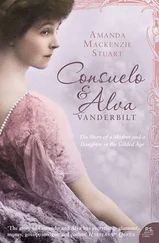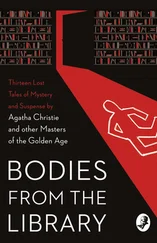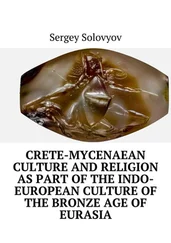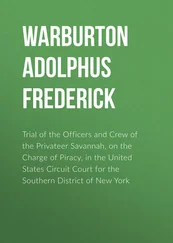1 ...7 8 9 11 12 13 ...19 These figures seem insignificant when contrasted with the heroic prices of our own epoch. Of these only a few and not the highest have yet been glanced at. Compare with the modest totals just mentioned the competition and the sums of money, both without precedent, expended in Christie’s salerooms during the seventies and eighties of the century. The rostrum mounted by the auctioneer may be, as is said, identical with that used in the earliest days of the house a century ago. It is the only visible link with the past still remaining. The quality of the crowd of buyers is not more changed than the prices which they are prepared to give; or the national opulence which these prices indicate. In those earlier days the salerooms were in Pall Mall instead of King Street, St James’s. These premises were only vacated, as many now living can remember to clear the way for the still youthful Royal Academy before it had, on its journey to Burlington House, reached the stage of Trafalgar Square. The keen Celtic face of Doyle, director of the Irish National Gallery; the strikingly handsome and Venetian profile of Sir Frederick Leighton; the delicately chiselled and thoughtful features of Woolner, more than creditable as a sculptor, far more than merely graceful as a poet; these among the company of possible buyers represented the professionally expert element. The late Sir William Gregory with his fine brow and leonine head, whose many-sided culture suggests the complete man of the Herbert of Cherbury type whom our ancestors worshipped; another Irishman on whom a picture acts as a magnet on steel, Lord Powerscourt; among Scots Lord Rosebery; the Duke of St Albans whose physiognomy in those days recalled his Stuart ancestry; the interested and intelligent presence of a representative of that exotic wealth which has encouraged English industry and art so much, Baron Ferdinand de Rothschild; these are among the best known members of the general circle. Nor should there be omitted the form of a tradesman whose position next to the auctioneer, and whose telegram and account book in hand proclaim his occupation. This is Mr Agnew, pre-eminently a creation of the new wealth of the Victorian epoch, as well as the promoter of not a few artists’ prosperity. To-day the enterprising trader is to prove himself the idol of the saleroom by paying the largest sum ever known to have been given for a single painting. And that in opposition to the peer of the longest purse of the day, the late Lord Dudley. That noble connoisseur by his bid of ten thousand guineas seems at first to have secured for Park Lane Gainsborough’s portrait of the Duchess of Devonshire, who won by her kiss the Westminster election for Charles Fox. Just as the hammer of fate is about to descend, the dealer intimates an advance. Amid applause, such as salutes the Derby winner on Epsom Downs, Mr Agnew 11 11 Now Sir William Agnew.
is declared the possessor of the incomparable canvas for the price, as yet unheard in any saleroom, of ten thousand one hundred guineas. Three years before this, in 1873, ‘The Sisters,’ also by Gainsborough, had brought six thousand, six hundred and fifteen pounds. Fourteen years after its first sale, in 1887, the same painting realized nine thousand, nine hundred and seventy-five pounds. Recent changes in the law of entail have undoubtedly tended to promote these unprecedented prices. The chief cause, however, is the general augmentation of wealth and the more lavish scale and ideas of expenditure that have penetrated all classes of the community. 12 12 All the details of art prices given in this chapter are derived from Mr G. Redford’s authentic record of art sales, first privately printed in 1888. For other information the writer is indebted to the late Sir J. E. Millais, P.R.A.
CHAPTER V
THE RICH MEN FROM THE EAST
Specific instances of the fusion with native elements of the owners of foreign wealth, especially in the case of the Jews. Growth in England from early days of Hebrew plutocracy. Different views as to number of Jew families, the names of these as preserved by Jewish writers. Westminster Abbey under Richard III. and Henry VII. completed with Jew money. Later settlements of Jews in England date from Charles II. Under George III. the prosperity of the Goldsmids foreshadows the future power of the Rothschilds. Early beginnings of the Rothschilds, on the Continent and in England. Rothschild and Waterloo; Rothschild and the Bank of England. Services of the family to the English State. Their method of using their wealth under Baron Lionel and his successors. Their example to others of their race and their work amongst their own people.
The close assimilation of the newer elements of English life to the older; the gradual but unchecked identification in pursuits, habits, culture and tastes of the aristocracy of wealth with that of birth have been already mentioned. More detailed illustration of these distinctive movements of the Victorian era are necessary to enable us to form an adequate idea of the personal and enduring influence exercised upon the society of England by those who since their national dispersion, have in all countries illustrated in themselves the chief developments and agencies of wealth. From the popular expressions sometimes employed about the Jews in England to-day, one might suppose they had become considerable among us only during the Victorian epoch. Few people, as they look at Westminster Abbey, remember that this monument of the national Christianity which the piety of Edward the Confessor began was completed under Richard III. and Henry VII. with money levied from the Jews. 13 13 See Picciotto’s Anglo-Jewish History for all these early facts about the Jews.
Under Henry III. the sufferings of the chosen race in England had been severe. Thereafter, a gradual but progressive improvement in their position took place. But so late as 1633, according to a Hebrew authority named Haham, quoted in the Anglia Judaica , astounding though the statement sounds, there were only twelve Jewish families in this country. The distinction of re-establishing the race on British soil has been claimed for the protectorate of Cromwell. It really belongs to Charles II., and actually occurred during the first few years after the Restoration. One of the comparatively few Anglo-Jewish conversions to Christianity took place about this time. Close to the Abbey, which his ancestors’ wealth had completed, in the church of St Margaret’s, Westminster, an Israelite physician, Speranza Collins, abjured the faith of his fathers, and was formally received into the Anglican Communion by Dr Warmester, Dean of Westminster. By the time that the house of Brunswick was established on the throne, the fabric of Anglo-Jewish plutocracy had well nigh built itself up. The great natural philosopher Emmanuel Da Costa, whom the Italian Jews of the eighteenth century furnished to England, compiled a list by name of all his countrymen living under the sovereignty of George III. In this list there are no Rothschilds. The patronymics of most frequent occurrence are Rodrigues, and Goldsmid. This latter seems to have been the Semitic family which, under the third George, occupied the position most closely analogous to that filled by the house of Rothschild under Queen Victoria. The country houses in the Sheen and Richmond district with their deer parks and vineries owned by Abraham and Jacob Goldsmid, foreshadowed distinctly the later beauties in the same region of Gunnersbury, if not of the more distant Mentmore.
At the close of the eighteenth century, the Frankfort Rothschilds, the friends and bankers of the Prince of Hesse-Cassell, were a power in Germany only second to that of the Empire. The capital on the Main had from the days of Charlemagne been a trading centre. During the sixteenth century, its fairs caused the place to be the market of the world, and three hundred years later may have given to the Prince Consort 14 14 The idea of the Exhibition being ‘universal’ was not that of the Prince, but of the Committee of the Society of Arts. It was first suggested in fact by Mr Thomas Winkworth.
the first idea of the great Exhibition in Hyde Park. Long before Mayer Amschel Rothschild, the founder of the firm died, the prices of Frankfort were being studied as closely as those of Antwerp or Rotterdam. The third brother of Anselm Mayer, who controlled till 1855 the Frankfort branch, was evidently the first great financial genius of his family. His enterprise and judgment made him the Crœsus of Europe. They also at a critical point in his career prompted him to save from ruin more than one Paris bank reeling under the effects of North American insolvencies. At the close of the last century, the English business of the Rothschilds was transacted by the firm of Van Notten. A dispute with a Lancashire manufacturer on whom Germany and Austria depended for their cotton goods, sent Nathan Mayer Rothschild from Frankfort to England. In this way the English house came into existence, and the necessity for foreign agents outside the family ceased. The Napoleonic wars, as is well known, largely contributed in their successive incidents to the earlier fortunes of the family. Already the first Rothschild had speculated largely in the bills on the English Government given by the Duke of Wellington for the support of the British troops. Settled in London he provided the channels for the regular transmission of funds to the forces in the Peninsula. Early in 1800, he was the first man on the London Stock Exchange. His agents followed in the train of every regiment. His couriers in their specially chartered ships were on every sea. Rothschild himself, unseen by others, watched the Battle of Waterloo. He crossed the Channel in a fishing boat, and arrived in London, to find it full of rumours of the English defeat. Casually appearing on the Stock Exchange, he received the condolences of the City on his ruin. Only he himself knew what his investments were. Instead of being ruined, he had added a million to the family wealth. Such at least is the conventional account. The foregoing details are in substance taken from an entertaining volume by John Reeves on The Rothschilds , published by Messrs Sampson Low.
Читать дальше












